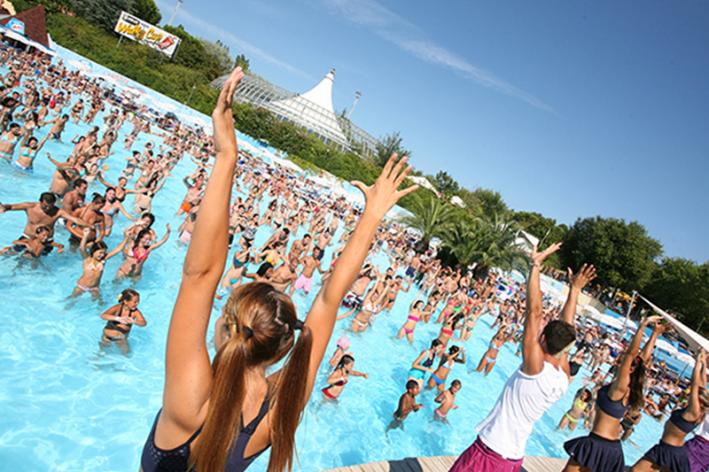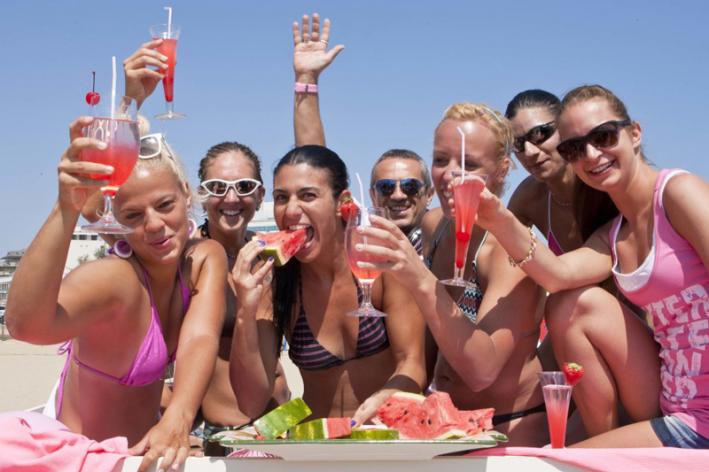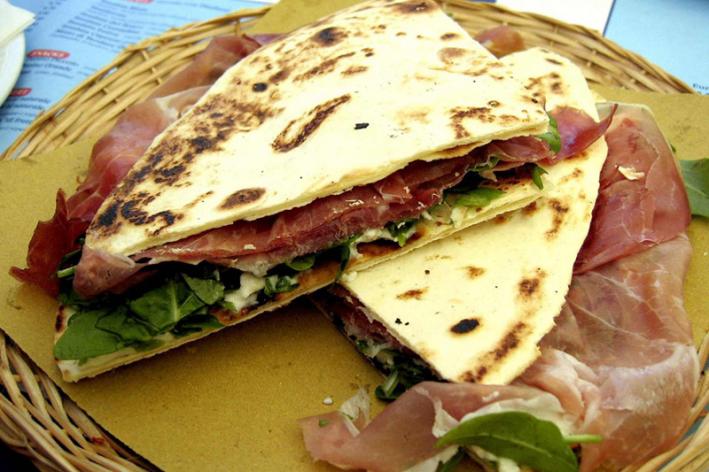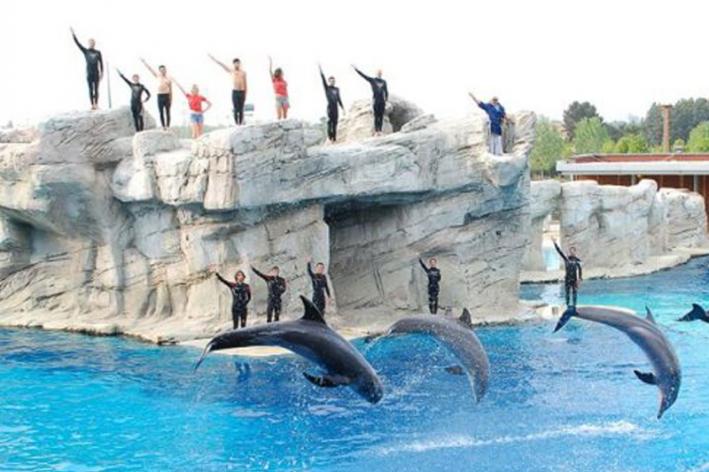Rimini
For the last 160 years, Rimini Riviera has been one of the most-frequented holiday resorts in Europe. The secret ingredients of such a lasting success are the friendliness and traditional hospitality of the people, a tradition which has kept pace with the demands of the present; and a landscape which integrates perfectly seaside and hills, culture and entertainment, monuments and amusements. A Rimini Riviera holiday is a meeting with a land and its people: the discovery of a real place which corresponds to your dreams and wishes.
Rimini Riviera: a look at the land
This is the southernmost part of the region of Romagna, lying between the Adriatic sea and the hills which separate it from the Montefeltro region. Rimini is the chief town in the province, a historic seaside resort and the birthplace of the great cinema director Federico Fellini. The boundaries are the province of Forlì-Cesena to the north, and Le Marche and the Republic of San Marino to the west. The territory offers pleasing vistas of restful scenery in a variety of colours: the deep blue of the sea, the golden line of the beach, the green curves of the hills, and the intense clear blue of the sky against which are silhouetted villages, castles, palaces and monuments. The towns in the area have grown up over the course of centuries, along the coast and in the two principal valleys, those of the River Marecchia and the River Conca. The Marecchia valley, hollowed out between massive rocky hillsides, holds vestiges of one of the earliest Italic civilisations, the Villanovians of Verucchio; the Conca valley is more gentle, although towards Le Marche the landscape becomes more rocky, scored with bare gullies. Both the Marecchia and Conca valleys were ruled by the Malatesta family, who built fortresses and dwelling-places throughout this region bordered by the lands of their historic enemies, the Montefeltro dynasty.
Rimini Riviera: hospitality, entertainment, and the sea
Rimini Riviera is one of the foremost holiday resorts in Europe and the Mediterranean basin. It offers an attractive combination of historic monuments and artistic masterpieces bearing witness to a distinguished past, and a vast, efficient, up-to-the-minute organisation system for visitors, a system known world-wide for its efficiency and for the warm welcome it extends to visitors. Rimini, Riccione, Bellaria Igea Marina, Cattolica and Misano Adriatico are famous throughout Europe as destinations where you can spend a pleasant seaside holiday with entertainment to suit every taste. The reception capacity of the province includes about 2200 hotels, together with holiday homes and hostels, camp sites, farm holiday centres, apartments, and private houses. Its services, equipment, and safety make Rimini Riviera beach popular with both young people and families. The very fine sand and shallow waters make it the ideal place for children to play. Bathing is supervised by the watchful friendly eye of the “bagnino”, the bathing attendant. The beach is well-organised, equipped with parasols, sun beds, and space for various sports ranging from bowls to beach volleyball to basketball. There are many water sports too: canoeing, windsurfing, kite surfing, water-skiing. The new modern Marina is equipped to meet the demands of all sailing enthusiasts. And for your free time, there is more than just the beach; the opportunities are endless: sports centres, discos, pubs and cafés, excursions in the hills and the historic inland villages, and above all a dense network of amusement parks and theme parks designed for entertainment for both adults and children.
Rimini Riviera: a land of ancient origins
Rimini Riviera is a land of ancient origins, with a distinguished past which has left rich and precious tokens. A thousand years before the coming of Christ, the Etruscans founded in Verucchio one of the most flourishing centres of Villanovian civilisation. On the coast, the Romans founded Ariminum, marking the end of the Via Flaminia and the beginning of the Via Aemilia. Ever since, Rimini has been a meeting place, a crossroads of civilisations. Its Roman past has left imposing and fascinating traces in the town to this day: the Augustus Arch, Tiberius Bridge, the Amphitheatre, and the Surgeon’s House. There are traces too of a flourishing mediaeval town: Palazzo dell’Arengo and the splendid fourteenth-century frescos in Sant’Agostino church, masterpieces of a prolific School which drew its inspiration from Giotto. During the thirteenth and fourteenth centuries these lands were ruled by the House of Malatesta, one of the most powerful families of the time. Its dominions extended through various regions of Italy, but the heart of the Seignory was always Rimini. Under Malatesta rule every inland village was fortified, and art and culture flourished. The Malatesta Temple was built in Rimini, one of the greater glories of Renaissance art, designed by Leon Battista Alberti and enriched with a Crucifix by Giotto, a fresco by Piero della Francesca, and carvings by Agostino di Duccio and Matteo de’ Pasti. Sigismondo Pandolfo built his sumptuous residence, Castel Sismondo, which now restored continues to dominate the historic core of Rimini. The rooms of the Fortress are used as a venue for Exhibitions of national and international significance. The Municipal Museum has (among other exhibits) a valuable collection of Roman engravings and an art gallery including works by the great masters who helped to write the history of art.
Rimini Riviera: active holidays and well-being
On the Riviera you can practise any sport you choose. In Rimini and other resorts you will easily find sports fields and centres where you can play tennis, basketball, soccer, five-a-side football, or volleyball. Sports clubs, associations, and federations increasingly choose Rimini Riviera as the venue for events, competitions, meetings and championships, because the resorts on the coast are able to provide excellent equipment, playing fields and sports centres suitable for many different sports. The Riviera is a real paradise for cycling enthusiasts: from the flat roads by the sea you can progress immediately to the switchback offered by the hills of the Malatesta Seignory, amidst enchanting scenery and fine mementoes of the past. On the coast are to be found each year increasing numbers of hotels equipped for cyclists and their much-loved bicycles. Golf enthusiasts can choose between Rimini-Verucchio Golf Club in Villa Verucchio and Riviera Golf Resort in San Giovanni in Marignano. And there is no shortage of stables and riding centres if you prefer to explore the hills on horseback. The Province of Rimini has the highest concentration anywhere of gyms and centres for physical activity and well-being. And every bathing attendant on the beach has a miniature gym near the parasols, with the relative equipment. So you can take a holiday and keep fit at the same time. If you enjoy pampering yourself, take a relaxing holiday where the key word is wellness, meaning health and well-being. Many hotels are now equipped with a health and beauty spa, or undertake to provide guests with this service. This type of holiday finds its focal point in the Riviera Spas, Rimini Terme and Riccione Terme.
Rimini Riviera: events and entertainment
Rimini Riviera is an explosion of events all the year round, not just in the summer: shows, theatre and cinema festivals, art exhibitions, sports events, cultural meetings, gatherings of every kind; festivals devoted to local wines and foods. All the resorts on the Riviera, and also the hill towns in the Malatesta Seignory, compete with one another to find ever more imaginative and interesting ways to keep their guests company. Every day and every evening, you can choose from a thousand different offers. You’re on holiday, and you’re at the centre of the world, where you can see all the latest fashions and trends of today, tomorrow, and the day after tomorrow. Your intelligence and your senses never stop. You’ll go home pleased to have seen, tasted, listened, followed, taken part.
The art and history of Italy is close at hand
Rimini and its Riviera are ideally situated for anyone wishing to explore the towns and villages in central Italy so richly endowed with art and history. Close at hand is San Marino, the world’s oldest Republic, with three hill-top fortresses which shape its distinctive profile, and numerous museums. A few kilometres distant is the fortress town of San Leo, with its magnificent castle and other historic gems including the Cathedral and the Romanesque parish church. Urbino, with its Renaissance Ducal Palace, is about eighty kilometres away. A journey of little over 150 kilometres will take you to Assisi, with frescos by Giotto in the San Francesco Basilica, or Florence, with its inestimable monuments and masterpieces. Just 50 kilometres distant is Ravenna with its splendid Byzantine mosaics; and if you follow the Adriatic coast for about 150 kilometres you will reach Venice, with its gracious palaces and monuments reflected in lagoon and canals. Rimini is also an ideal centre for visiting other art and culture centres in Emilia Romagna such as Bologna, Parma and Ferrara.





























